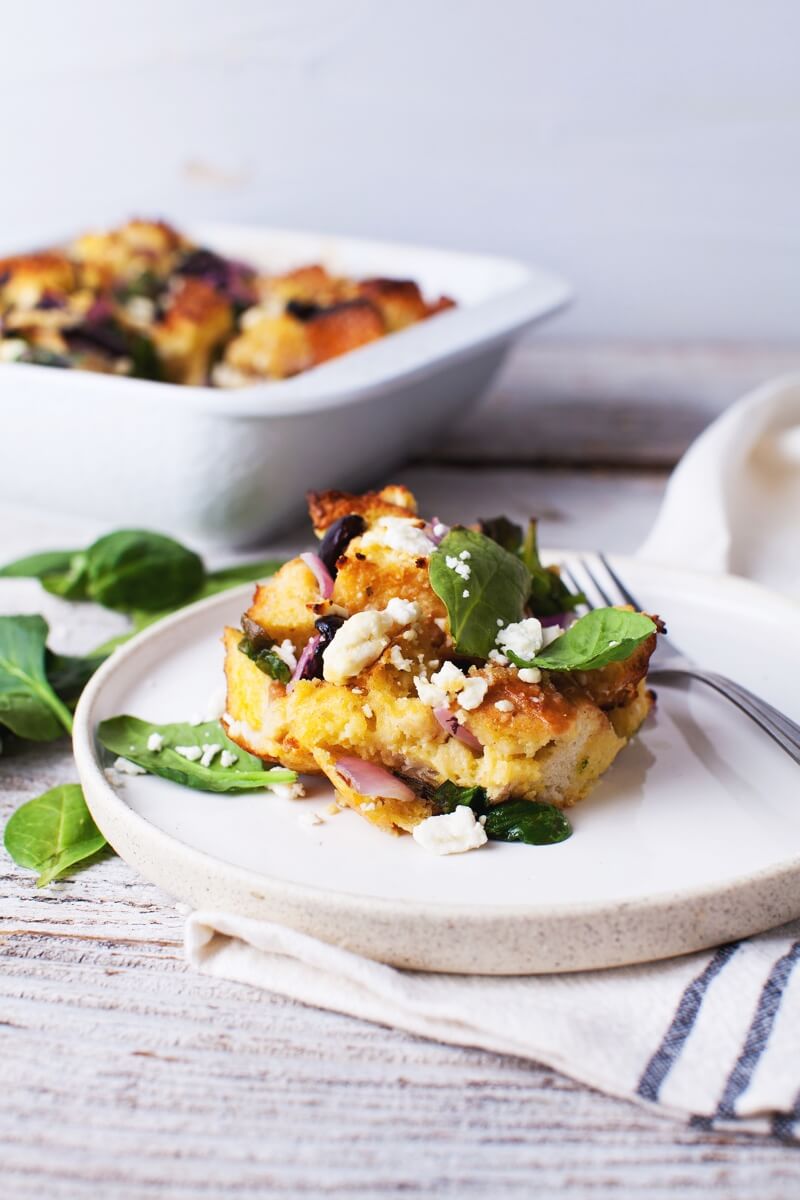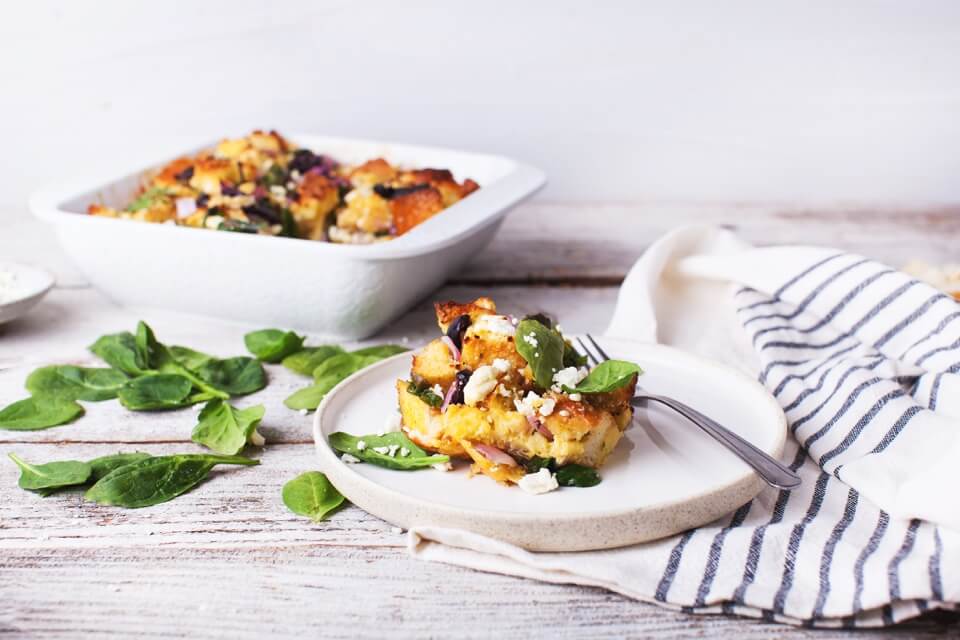Easy, endlessly adaptable and always ready when you are, a strata is like the unicorn of breakfast dishes: a bit magical. And it doesn’t even need to be breakfast food, necessarily. This casserole, based on bread soaked in dairy and eggs and baked, is a hearty and welcome dish any time of day.
A strata is similar to many egg-based dishes, but simpler. Whereas quiche requires a crust, a frittata requires flipping, gratins require breadcrumbs, and souffles require whipped egg whites (and nerves of steel!), a strata can be thrown together with basic ingredients and almost no prep at all. What’s more, it can be assembled and refrigerated overnight to be baked first thing in the morning. The result is a breakfast or brunch dish that tastes far more elegant than the sum of its parts.
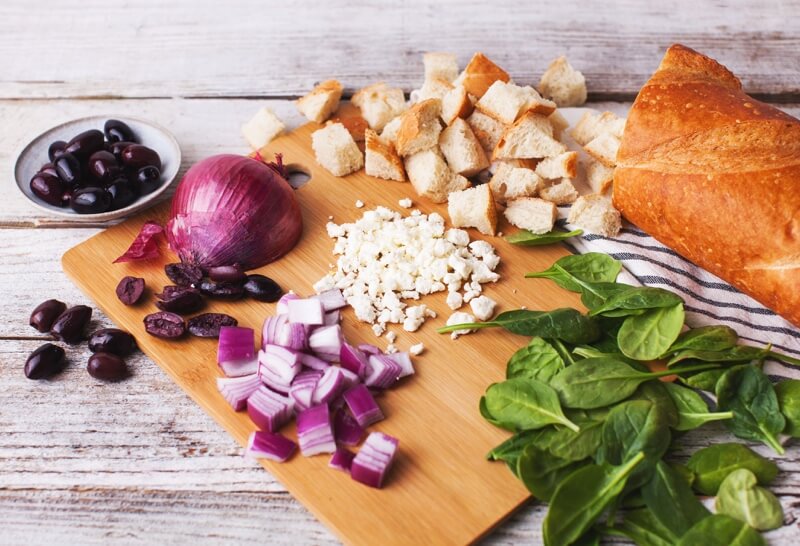
The first recorded recipe for strata comes from the 1902 Handbook of Household Science by Juniata L. Shepperd, an instructor of “cookery and laundering” at the University of Minnesota. In it, she described layering bread, white sauce (like bechamel), and cheese, then baking it in a buttered dish. These days, strata recipes almost always include eggs, milk, and cheese; along with several other ingredients such as precooked meats and vegetables. Good examples include our recipes for Ham and Broccoli Strata and Crab Strata Florentine.
But while a recipe can be helpful, it isn’t necessary for making a beautiful, brunch-worthy strata. Commit this simple formula to heart, and you’ll never need a recipe again: Pour 1 part each eggs and milk, over 2 parts cubed bread, as well as 1 parts each cheese and additions like precooked meat, veggies or beans.
How might this play out?
- For a classic American combination, that might look like 1 part each eggs, cheddar cheese, milk, caramelized onions and cooked sausage or ham, poured over 2 parts toasted and cubed English muffins
- For an Italian version, this might include 1 part each eggs, Fontina cheese, milk, and cooked pancetta, poured over cubed ciabatta bread (and topped with a handful of arugula after baking)
- For Mexican flavors, this might be 1 part each eggs, jack cheese or queso fresco, milk, and add-ins like chorizo, green chiles, chopped tomatoes, and black beans, poured over 2 parts cubed sourdough or French bread
- For a Greek version, that could be 1 part each eggs, feta cheese, milk, onions, wilted spinach and kalamata olives, poured over 2 parts cubed sourdough or French bread
- For Spanish style, that might mean 1 part each eggs, manchego cheese, milk, and Serrano ham and piquillo peppers, poured over 2 parts cubed olive bread
No matter which adaptation you use, always follow a few rules to ensure that your strata wins breakfast.
Assemble your strata the night before
That way, the bread has a chance to soak fully in the eggs, seasoning and milk ― and you have breakfast practically done by the time you wake.
Liberally butter a baking dish
A standard casserole or gratin dish works well for strata. Just be sure to butter it with Challenge Butter to enhance the savory flavor and to keep ingredients from sticking to the dish’s sides.
Butter and toast the bread
Strata recipes often call for day-old bread because when it’s dried out a bit, bread keeps its shape better and resists turning into a gloppy mess. In the absence of day-old bread, however, liberally butter and toast slices of a firm textured bread in a 250°F oven on a sheet pan for 10 minutes, turning once. Let them cool then cube them before layering the strata.
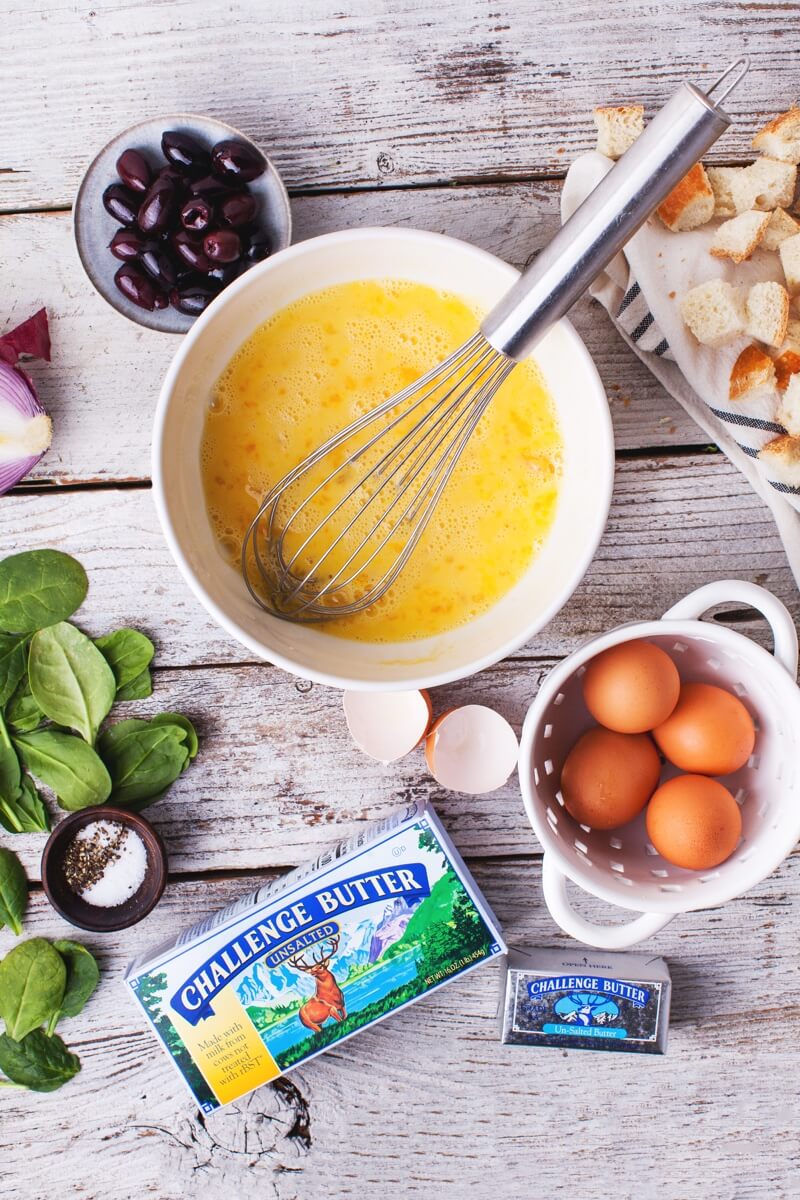
Start layering
Once your bread is cubed (and perhaps toasted), layer it into the buttered baking dish. This is the base of your strata. Now toss in the extras like meat, veggies and beans, then sprinkle shredded cheese over all (but don’t forget to hold back a handful to melt on the top).
Season your egg-milk mixture
When you combine the eggs and milk, give them a dash of salt and pepper, plus any spices, herbs or sauces that complement your style. For a classic strata, that might mean a dash of hot sauce or mustard, or perhaps a judicious pinch of nutmeg. For Greek style, include dried oregano and lemon zest; for Mexican, try chili powder, red pepper, cumin or chopped cilantro. For Italian flavors, whisk in fresh or dried basil; and for Spanish, go with smoked paprika and/or Spanish saffron.
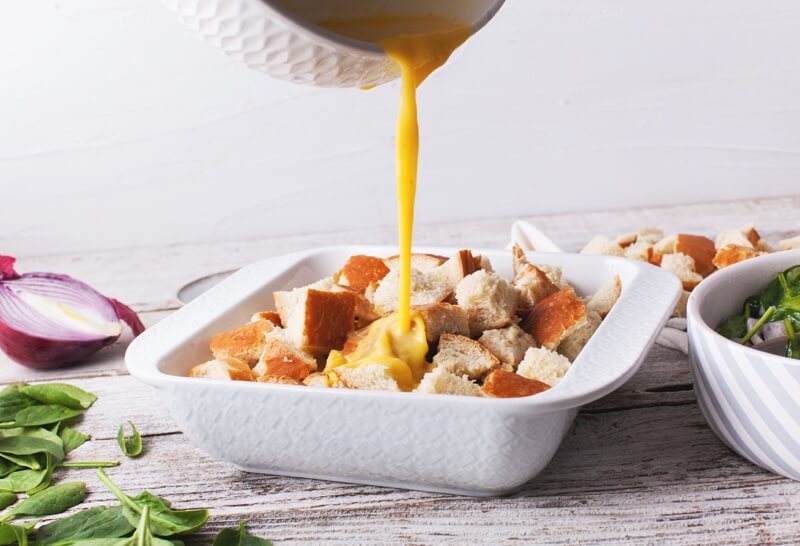
Pour liquid over the layers
This eggy, seasoned liquid will permeate the bread and, when baked, puff up to a delightful golden brown.
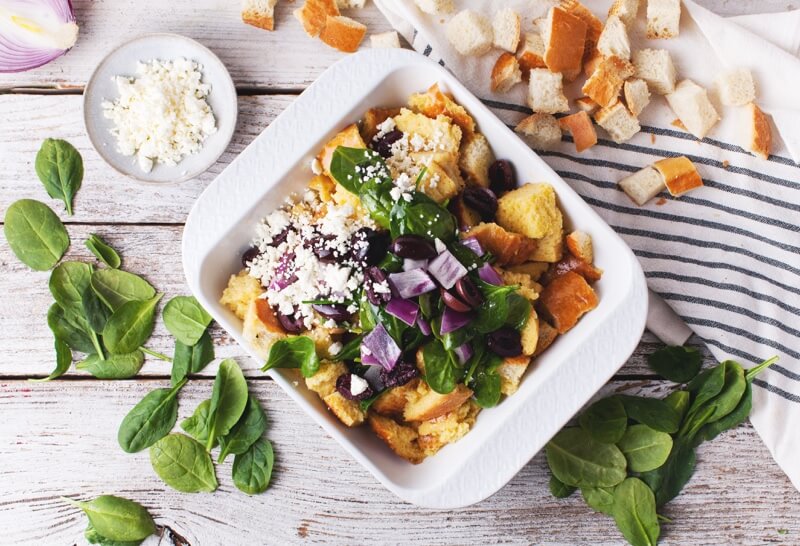
Top with a little more cheese
Remember that handful of shredded cheese you held back? Now is the moment to toss that on top.
Let it chill overnight
Cover your assembled strata with foil and pop it in the fridge for 8 to 10 hours. Then, when you wake up, preheat your oven to 350°F for 30 minutes or so, leaving the strata on a countertop, covered, to come to room temperature.
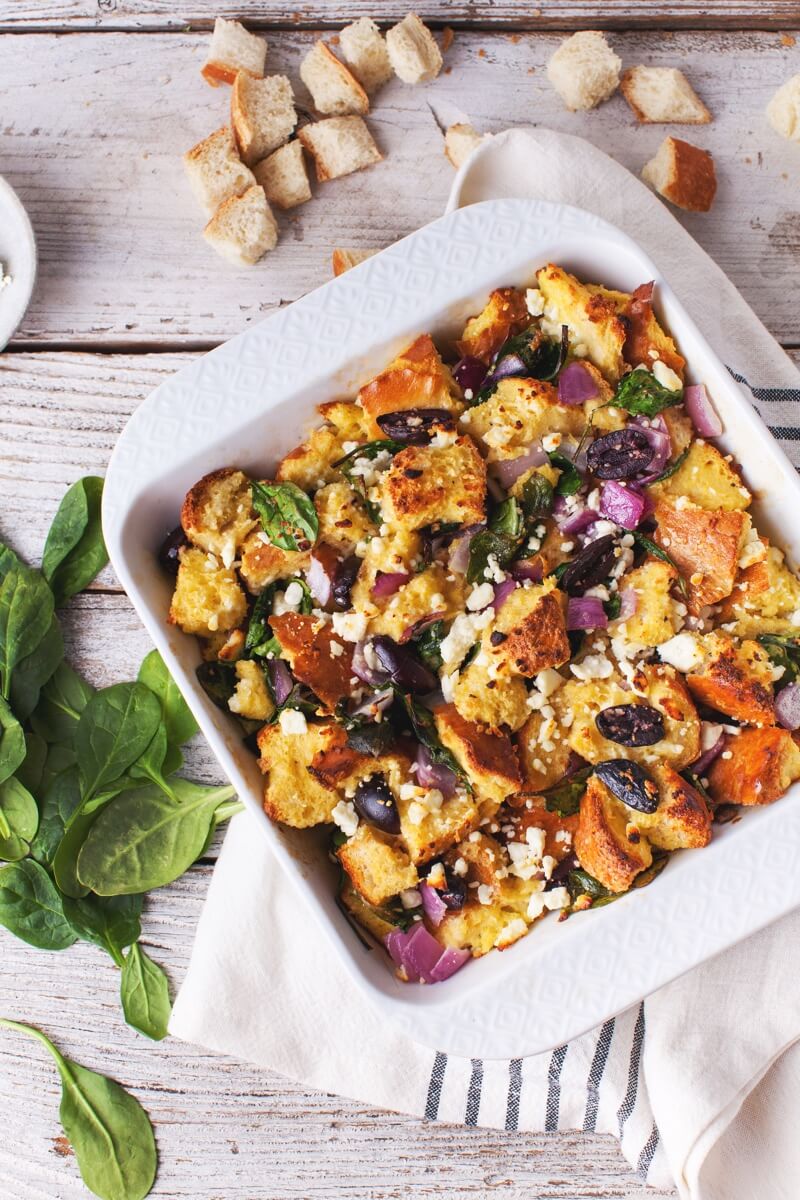
Bake, let cool, and serve
Put the strata in the preheated oven, covered, for 20 minutes or so. Then uncover the pan and let it bake for another 20 to 30 minutes. The length of time you bake it will, of course, depend on the volume of your dish. But generally speaking, a strata is fully baked when the center no longer jiggles. Remove when finished, and allow to cool a few minutes before digging in.
